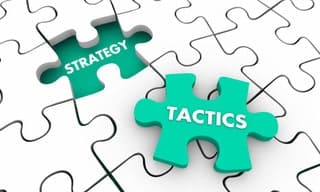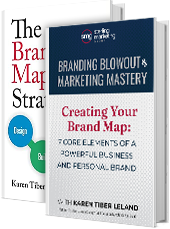There is growing importance for leaders to cultivate executive thought leadership as part of their personal brand in today’s business landscape. The benefits of thought leadership marketing includes increased credibility and trust, and provides insights into crafting effective thought leadership content and strategies. Explore various types of thought leadership and offers examples of successful thought leaders.

Now more than ever, leaders looking to reach their full potential need to think and behave like entrepreneurs. This includes building a personal brand based on their executive thought leadership. In the post-COVID world, companies must have more than a hot product and stellar service. Today’s customers insist on knowing the leaders behind the companies they buy from. CEOs and C-suite leaders who are not working on building a solid personal brand with executive thought leadership do so at their peril.
Over the past decade, I’ve helped more than 500 CEOs and C-suite executives around the world build solid personal brands based on thought leadership. I also conducted deep-dive research for my most recent book, The Brand Mapping Strategy: Design, Build and Accelerate Your Brand, and my column in Inc.com.
This article offers information I’ve culled from my research and work with companies such as LinkedIn, Apple, Google, American Express, and Capital One. In this article, I’ll give you insights into what thought leadership is, how to create consistently high-quality thought leadership content, and the thought leadership strategies you can use to connect with your customers, investors, staff, and potential employees. A roadmap for building a powerful executive thought leadership strategy in 2023 and beyond follows.
Why Should You Invest in Thought Leadership Marketing?
The greater a CEO’s or executive’s recognized expertise and credibility in their field, the more value they bring to their personal and business brand. Recent research from BrandFog.com shows that 75% of those surveyed believe C-suite and executive leadership is improved by thought leadership participation on social media. In addition, 71% of U.S. respondents feel that C-suite executives are more trustworthy when communicating their core mission, brand values, and purpose on social media.
Although the trend toward executive thought leadership started well before COVID, the pandemic accelerated it. With a good percent of the population working from home, many people had more time than ever to Google, the leadership of the companies they do business with, including the CEO.
The problem was that many CEOs and C-suite executives had no authentic online brand, insufficient or non-existent LinkedIn profiles, and what I call a “no brand, brand.” Not a bad brand per se, but not one that stands out for its thought leadership.
More to the point, research shows that 67% of all Americans, regardless of their age, gender, geographic location, their job title, are willing to spend more money on products and services from companies that have founders whose personal brands align with their personal values. In addition, BrandBuilders.com found that 74% of all Americans say they’re more likely to trust someone who has established a personal brand, and 80% of Americans agree that companies are more influential if their executives have a personal brand.
In the Edelman-LinkedIn B2B Thought Leadership Impact Study, 57% of buyers say that thought leadership builds awareness for a new or little-known brand. 53% of buyers say it’s important for new and small companies to produce thought leadership if they want buyers to consider working with them.
The bottom line is that taking on executive thought leadership is not a “nice to have” option today but a critical responsibility in building your business and company brand. One study by semrush.com found that:
81.4% of thought leadership content results in organic traffic
64.9% see a boost in social media following and engagement
47.6% of thought leadership content generates the actual leads and sales

What Is Thought Leadership and What Does It Mean to Be a Thought Leader?
Assuming a leader accepts the need and challenge to build an executive thought leadership brand, the obvious question is, what is a thought leader?
According to the Oxford Dictionary, a thought leader is “one whose views on a subject are taken to be authoritative and influential.”
One recent survey found that almost 61% of leaders believe that thought leadership involves creating inspirational content that drives changes, and 46.5% say it involves educational content.
In my experience working with Inc.5000, Fortune 5000, and start-up CEOs to build their executive brands, the key to creating thought leadership content that resonates is to combine trends, informed experience and points of view, deep knowledge, and research.
And in today’s world, that content is most often distributed online. Be it social media sites, YouTube or a podcast, the online presence of the CEO or C-suite executive is core to an executive thought leadership strategy.
As a result, it’s critical to ensure the executive’s online presence, especially LinkedIn, is in line with their personal brand and gives a clear sense of who the leader is and what they stand for — not just what they have accomplished. According to a CareerBuilder poll, 4 out of 5 people say who and what they find on LinkedIn helps drive their business decisions.
I often get called by CEOs and executives who know they need to build a personal brand online but are hesitant to make themselves part of the story. But like it or not, today’s customers demand to know who you are and what you think. Staying off social media and keeping silent is no longer an option.
And it’s not just consumers who benefit. 81% of employees believe that socially active CEOs are better equipped to lead companies, and 80% say they’d rather work for a CEO who engages with people on social media.
Types of Thought Leadership
While the general definition of a thought leader, applies across the board, there is more than one type of thought leadership. Most CEOs and executives fall into one of three buckets or flavors of executive thought leadership.
The Magnetic Thought Leader
Possessing an extraordinary power or ability to attract. Some CEOs and executives around their thought leadership in their ability to pull other people towards them. Their style makes them compelling, charismatic, engaging, and alluring.
Consider Richard Branson, the billionaire business magnate. Branson dropped out of school at age 16, and did not hail from a wealthy family, yet has gone on to be one of the most recognized business leaders. Branson owns 400 companies, including mobile, airlines, financial services, music, and more. Imagine removing Branson’s association from those companies. They would likely seem like just another player in their space. Branson’s charismatic personal brand adds spice to the business brand.
The Meaningful Thought Leader
Having a serious, important, or useful quality or purpose. Executives who embrace a meaningful flavor of thought leadership are known for their noteworthy, important, and consequential actions.
Consider Google CEO Sundar Pichai, who, during the heart of the Covid crisis, allocated $800 million to help small businesses, NGOs, and healthcare workers to help them slow the spread of COVID-19 and keep their doors.
The Momentous Thought Leader
Of great importance or significance, especially in its bearing on the future. These leaders take crucial, vital, and meaningful actions that aim at creating significant changes down the line.
Consider Bill Gates and the Melinda and Bill Gates foundation, whose state on their website, “We are a nonprofit fighting poverty, disease, and inequity around the world.” A large part of Gate’s CEO brand and thought leadership is organized around his work in climate and energy, poverty, and world health issues.
Who Are Thought Leaders Today?
While it’s easy to see the thought leadership of highly public and well-known CEOs such as Bill Gates and Richard Branson, thousands of lesser-known executives is getting thought leadership right every day. You may never have heard of them, but they offer potent lessons in executive thought leadership none the less. Here are just a few examples.
Charles Hazlewood
Hazlewood is a British international conductor, film and theater music director, composer, and music curator. In his TEDGlobal talk Trusting The Ensemble, Hazlewood emphasized the importance of trust in musical leadership and how trusting the musicians in his ensemble allows him to add “a youthful energy and modern twists to centuries-old masterworks” of classical music.
Executive thought leadership takeaway: Take what you know, your area of expertise, and generalize it to places outside your space. Extract the principles, practices, and ideas and apply them to other spheres.
Helen Fisher
Fisher is a biological anthropologist, senior research fellow at the Kinsey Institute, and the chief scientific advisor to Match.com. She is most well-known for her TED Talk, The Brain in Love. Her thought leadership is centered around what happens from a physiological standpoint when we experience love and other human emotions.
Executive thought leadership takeaway: Find a message that resonates across the board with a wide variety of people regardless of age, social status, race, religion, or political point of view.
Rosalind Brewer
Brewer was formerly Starbucks’ chief operating officer and is currently the CEO of the drugstore chain Walgreens Boots Alliance. This position makes Brewer the only Black woman presently leading a Fortune 500 firm and the third Black woman in history to serve as a Fortune 500 CEO.
Executive thought leadership takeaway: Defy others’ expectations and biases about who you are. Surprise people positively with who you are, what you have achieved, and what you stand for.

How to Create a Thought Leadership Strategy
The most effective executive thought leadership strategies consider three things.
First, at its heart, creating an executive thought leadership strategy is about creating what I call a “parallel brand.” Think of it like this. Every business has a company brand they focus on building. But at the same time, in parallel, there is a CEO and C-suite executive brands. Most companies prioritize the business brand, and the CEO and executive brands fall to the wayside.
I believe that the best practice is to treat the business and personal brands as two sides of the same hand. When this happens, one plus one equals four. In other words, the CEO and executive brands enhance and enrich the business brand, and the business brand is what happens is the CEO. Executive brands enhance the business brand, and the business brand boosts the CEO brand. This creates a mutual upward spiral of credibility that builds the brand equity of the CEO, C-Suite executives, and the company.
Second, the CEO or executive thought leadership brand must be authentic and sustainable over time. You need to create a soundbite that sounds good. The heart of an executive’s thought leadership must be true to who they are, what they believe, and what they stand for. Effective executive thought leadership is the sum of that person’s expertise, experience, and contribution.
Third, the thought leadership strategy must be based on a positive and affirming brand. It can even be contrarian, but a negative brand over time is not sustainable. It may make the CEO or executive “infamous,” but it does little to uplift the positive reputation of the business brand.
Thought Leadership Marketing Strategies
Considering these factors, each CEO or C-suite executive needs to put together their own thought leadership marketing strategy. The best strategies incorporate tactics that resonate with the audience for the thought leadership and are accurate to the executive’s expertise, interest, and areas of commitment. One of the ways I help formulate a thought leadership marketing strategy for my clients is to follow a simple discovery process by asking these questions as a starting point.
Seek out your whitespace
Where do your expertise and the interests of your audience intersect? Who else is currently occupying that space as a thought leader? How is what you are bringing to the space unique?
Project a perspective
How are you planning on shaping the conversation in the space you want to occupy? What will your point of view be? What experience are you basing your opinions on? What forward-thinking, leading-edge, and new ideas are you contributing to your industry?
Dive into digital citizenship
How are you participating in social media and online currently? What are you contributing to the online communities you are a part of? Is your social media consistent and of the quality that reflects your thought leadership?

From Thought Leadership Strategy to Tactics
Having answered these questions, the next step is putting together the tactics at the heart of your executive thought leadership marketing strategy. Consider which of the following would be on point with your personal brand and thought leadership.
- Traditional public relations (PR)
- Awards/honors
- Radio
- Videocasting
- Writing a Book
- Long Form Posting on LinkedIn
- Blogging
- Social Media Posting (3x a week)
- Webinars (Being on webinars or leading webinars)
- Conferences (keynoting or being a panelist)
The Five Challenges of Executive Thought Leadership
As crucial as it might seem to create a CEO or executive personal brand based on thought leadership, a few challenges can get in the way. While not impossible to overcome, they can be significant if not managed. Here are the five most common challenges to be aware of when embarking on an executive thought leadership path:
#1. Personal branding is not the same as business branding
Operating out of the assumption that personal branding for executives plays by the same rules as business branding. While there are some crossovers and similarities between personal branding for executives and business branding, some significant differences need to be factored in. When the players have a mindset that these two types of branding are the same, just for different audiences, decisions can be skewed in a direction that could serve the client better.
#2. Branding works best when executives are involved
The CEO or senior executive delegates the critical decisions about their brand or strategy to a CMO or communications manager. While these folks have tremendous knowledge and experience to contribute, personal executive branding works optimally when the leaders are directly invested in creating their thought leadership and its execution.
#3. Thought leaders have to show up
The CEO or executive does not do what they said they would do. By their nature, CEOs and executives are leaders with busy schedules. However, to be the most effective, thought leaders must show up for scheduled interviews, create content (or work with someone to get it built), participate actively on social media, etc.
#4. Branding by committee is less effective than branding by individuals
Branding by committee. In organizations where a group or committee has taken on the role of ensuring the executive personal brand is implemented, a mindset of branding by committee can take hold. This generally leads to a situation where the lowest common denominator or vote drives the thought leadership development and strategic plan. However, this is rarely the most effective for the executive thought leadership brand and can significantly diminish the results of the process.
#5. Branding is a long game
Failure to create an overall strategy that values long-term investment – over short-term gain. Some CEOs and executives view the thought leadership process as a sprint instead of a marathon. Their focus on the short-term results of the process keeps them from seeing the bigger picture of the value of thought leadership brand building over time.
Don’t Let Perfect Thought Leadership Be the Enemy of Good.
Creating a path to executive thought leadership requires time, energy, money, and patience. The choices required can be overwhelming. The key is to take it one step at a time and start. A well-thought-out strategy is a practical jumping-off point, but adjustments will happen along the way. The only real way to fail at building executive thought leadership is to not engage at all. Anyone who plans to wait out the personal-branding trend until it passes needs a new plan. CEO and executive thought leadership is no longer an option. If you don’t define your brand, someone else will.
How SMG Helps Our Clients To Meet These Challenges.
For more than 20 years, I have helped CEOs, C-Suite executives, entrepreneurs, and start-up founders create and implement business and personal brands based on their thought leadership. Much of what I’ve learned about this topic comes from up close and in the fieldwork with leaders from companies such as Apple, Google, LinkedIn, Marriott Hotel Group, Johnson, Johnson, American Express, and many more.
At one point, I had so much information in my head that I just had to get it down on paper. That is how I wrote my twelfth traditionally published book, The Brand Mapping Strategy: Design, Build and Accelerate Your Brand, and gave a TEDx Talk on the unique contribution that underlies each of our personal brands.
As an author and columnist for Inc.com, I constantly search for studies, surveys, real-world examples, and techniques to help my clients achieve stronger brands that make them stand out for their thought leadership in the marketplace. In this article, I have aimed to share some of the most important things I have discovered about executive thought leadership.
If, after reading this article, you find yourself thinking, “yes, I get it, I need to do this,” but are in a quandary about how to get there, consider booking an initial consultation with me at no charge.
I will review your executive thought leadership before our call and give you at least one or two specific ideas you can use to build a better personal brand: no sales, just useful information and insight. You can book a session with me here.
